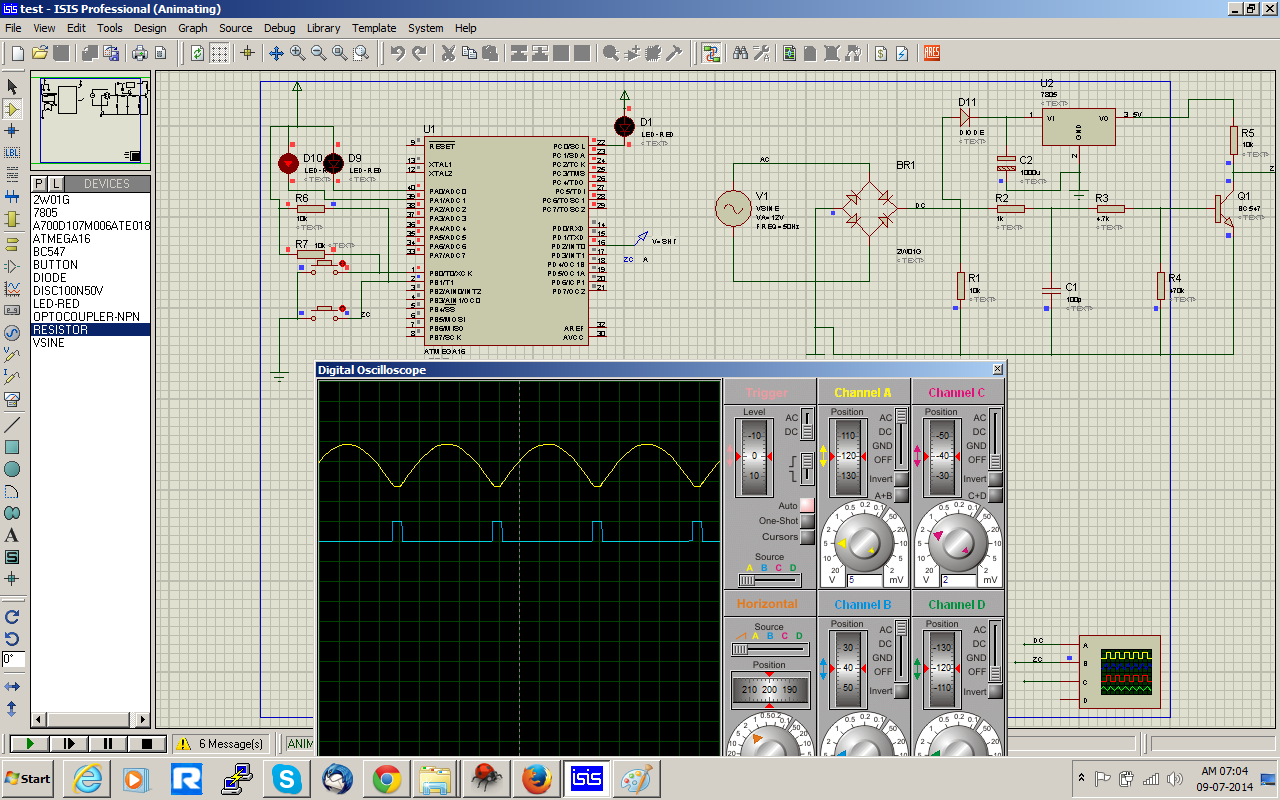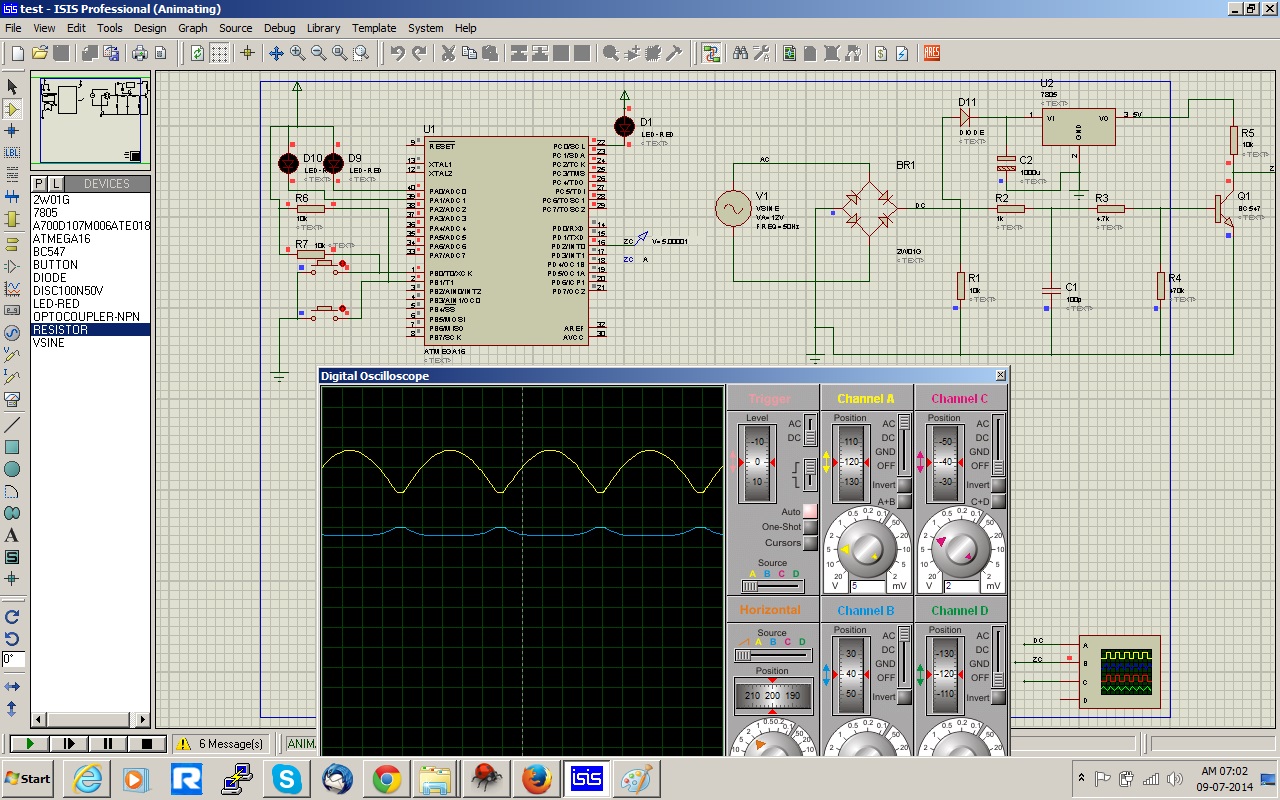tahertinu
Member level 4

Hi all,
I am working on AC dimmer circuit , for that i have have interfaced the Zero Cross Detection circuit with ATmega16 INT0 pin. INT0 is configured as a rising edge. here i am attaching image which shows the working of Zero cross detection is good. but when i interface its output with ATmega INT0 pin, the Zero Cross Pulsed gets down and nothing happen on INT0 pin. i have tested INT0 code separately which also working as expected. I am not getting where i am doing anything wrong? please somebody help me who has worked with such project ever before
Here is a code snip which gives INT0 routine and Int0 Configuration as rising edge.
When i use this Zero Cross Detection pulses as a normal switch its working good, but when i use it with INT0 pin the pulse get destroyed and nothing happens as attached images



I am working on AC dimmer circuit , for that i have have interfaced the Zero Cross Detection circuit with ATmega16 INT0 pin. INT0 is configured as a rising edge. here i am attaching image which shows the working of Zero cross detection is good. but when i interface its output with ATmega INT0 pin, the Zero Cross Pulsed gets down and nothing happen on INT0 pin. i have tested INT0 code separately which also working as expected. I am not getting where i am doing anything wrong? please somebody help me who has worked with such project ever before
Here is a code snip which gives INT0 routine and Int0 Configuration as rising edge.
Code:
/*
* Written in AVR Studio 5 / AVR Studio 6
* Compiler: AVR GNU C Compiler (GCC)
*
* Author: AVR Tutorials
* Website: www.AVR-Tutorials.com
*/
#include <avr/io.h>
#include <avr/interrupt.h>
#define F_CPU 16000000UL
#include <util/delay.h>
#define DataPort PORTC // Using PortC as our Dataport
#define DataDDR DDRC
//Interrupt Service Routine for INT0
ISR(INT0_vect)
{
unsigned char i, temp;
cli();
//_delay_ms(500); // Software debouncing control
//temp = DataPort; // Save current value on DataPort
/* This for loop blink LEDs on Dataport 5 times*/
DataPort = 0x00;
for(i = 0; i<100; i++)
{
_delay_us(200); // Wait 5 seconds
//_delay_us(200); // Wait 5 seconds
}
DataPort = 0xFF;
//DataPort = temp; //Restore old value to DataPort
sei();
}
int main(void)
{
DDRD = 1<<PD2; // Set PD2 as input (Using for interupt INT0)
PORTD = 1<<PD2; // Enable PD2 pull-up resistor
DataDDR = 0xFF; // Configure Dataport as output
DataPort = 0xFF; // Initialise Dataport to 1
GICR = 1<<INT0; // Enable INT0
MCUCR = 1<<ISC01 | 1<<ISC00; // Trigger INT0 on rising edge
sei(); //Enable Global Interrupt
while(1)
{
/* if(DataPort >= 0x80)
DataPort = 1;
else
DataPort = DataPort << 1; // Shift to the left
_delay_ms(500); // Wait 5 seconds */
if(!(PIN_1 & (1<<SW_1))) //If switch is pressed
{
toggle(LED_PORT,LED_1);
_delay_ms(1000);
}
else if(!(PIN_1 & (1<<SW_2))) //If switch is pressed
{
toggle(LED_PORT,LED_2);
_delay_ms(1000);
}
}
}When i use this Zero Cross Detection pulses as a normal switch its working good, but when i use it with INT0 pin the pulse get destroyed and nothing happens as attached images







